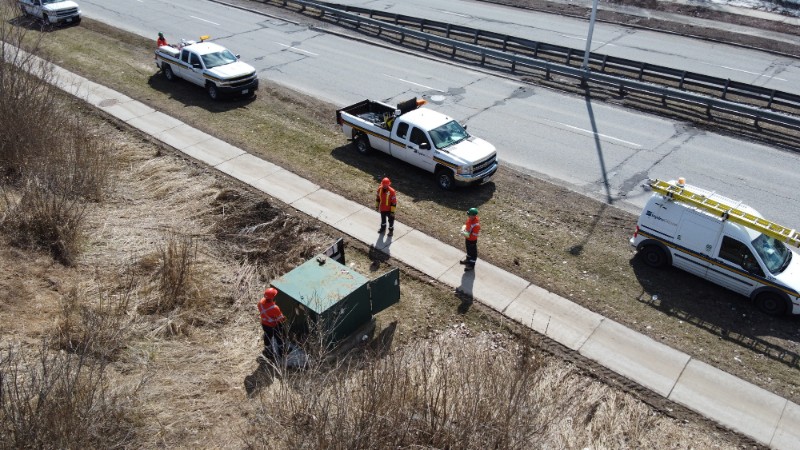Hydro Ottawa’s field crews traditionally start their shift huddled around the hood of their work trucks, reviewing the day’s job plan as a team.
From the time they start their careers as apprentices, the utility’s technicians learn to work in close proximity to one another, collectively identifying potential safety hazards and coordinating their movements.
So when the magnitude of the COVID-19 pandemic became clear and physical distancing measures were introduced, it meant a dramatic shift for Hydro Ottawa’s workforce – both for field workers, who now had to maintain that same focus while staying six feet apart, as well as for its office-based employees, who had to rapidly adjust to a new world of working from home.
The utility’s HR leaders quickly ramped up employee communication, pulling together resources to ensure employees had the necessary tools and technology to work productively and collaboratively from home. E-learning courses on leading virtual teams were shared with supervisors and a dedicated webpage was set up for them to share strategies on how teams can still work safely while maintaining physical distance.

These efforts drew upon a strong culture of employee wellness within Hydro Ottawa that’s central to ensuring local residents receive safe, reliable electricity service and has earned the company recognition for consistently ranking among the region’s top employers.
The recent emphasis on connectedness or emotional wellness amid the COVID-19 pandemic complements other holistic initiatives in recent years as well as efforts to promote mental and physical wellness through various programs and a modernization of the organization’s physical workspace.
“We’re constantly monitoring the pulse of the organization,” says Donna Burnett Vachon, Hydro Ottawa’s director of change and organization development. “We’re soliciting feedback from supervisors and employee committees, recognizing the mental health strain and listening to our staff.”
A safe, healthy and sustainable workplace
To see how wellness is firmly entrenched in Hydro Ottawa’s culture, one needs to look no further than the organization’s new Hunt Club Road main office and work centre. Its design was guided by several principles, including health and wellness, collaboration and innovation.
“We were looking to create a safe, healthy and sustainable workplace that supports the well-being of our employees and the environment,” Burnett Vachon says.
That was reflected in ensuring employees had access to natural light throughout the building, outdoor spaces to enjoy fresh air, fitness spaces as well as healthy food options in the cafeteria.
Careful attention was also paid to the selection of ergonomic furniture, such as adjustable chairs, workstations and monitors that considered the significantly different tasks performed by Hydro Ottawa’s office and field employees.
“We’ve had a lot of great feedback from our employees,” Burnett Vachon says. “They say the office promotes wellness and is a great space to work in.”
Evolution of wellness
The scope of workplace wellness has expanded in recent years as employers increasingly appreciate its impact on employee productivity, safety and engagement.
For a significant portion of Bruce Lang’s 30-plus-year career, conversations around workplace wellness typically centred around occupational health and safety and employees’ physical health – how to reduce the risk of heart attacks, for example, or supporting staff trying to quit smoking.
Lang, Hydro Ottawa’s director of health, safety and environment, says there’s still an emphasis on helping employees sustain a long, healthy career – especially in physically demanding roles, by integrating wellness into conventional safety activities.
At Hydro Ottawa, a good example of this involved bringing in ergonomics specialists to lead workshops for field crews – held in the organization’s garages next to work vehicles – on how to prevent injuries through stretching and avoiding awkward work positions. Over the last decade, he says, there’s been a significant shift towards “more holistic, all-encompassing conversations around health, safety and wellness in relation to all aspects of people’s work, their personal lives and how the two intersect.”
Burnett Vachon adds that such discussions have become mainstream and are no longer restricted to closed-door conversations. As an example, she points to Hydro Ottawa’s annual mental wellness campaign associated with Bell Let’s Talk Day that in 2020 included a guest speaker from the Royal Ottawa Mental Health Centre. The event attracted more than 50 employees in-person – with many more joining via video link – actively discussing mental wellness with their peers and managers.
“Five years ago, we would have been lucky if we had a half-dozen people in the room,” Burnett Vachon says. “Now we’re all engaged in those discussions about wellness.”

